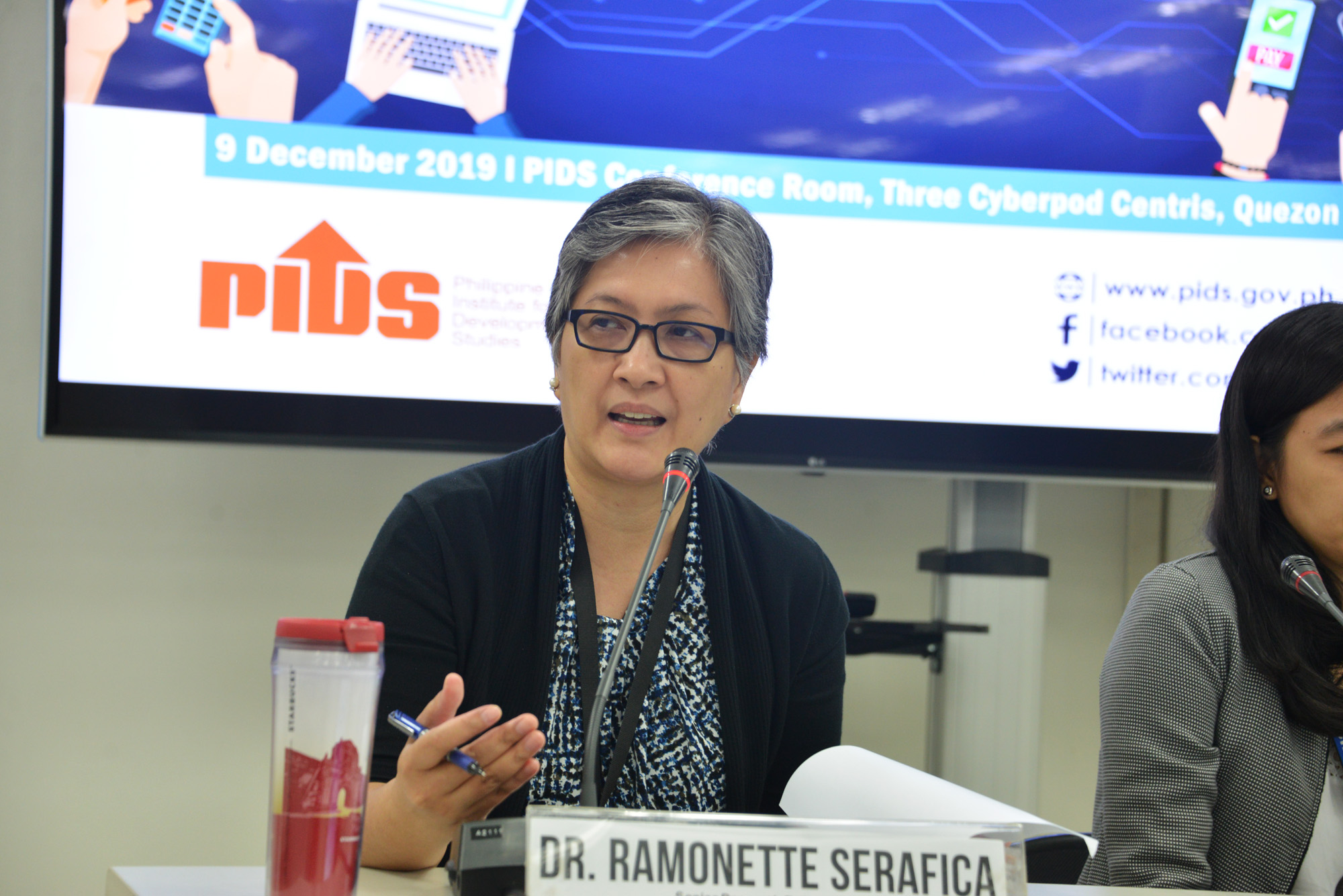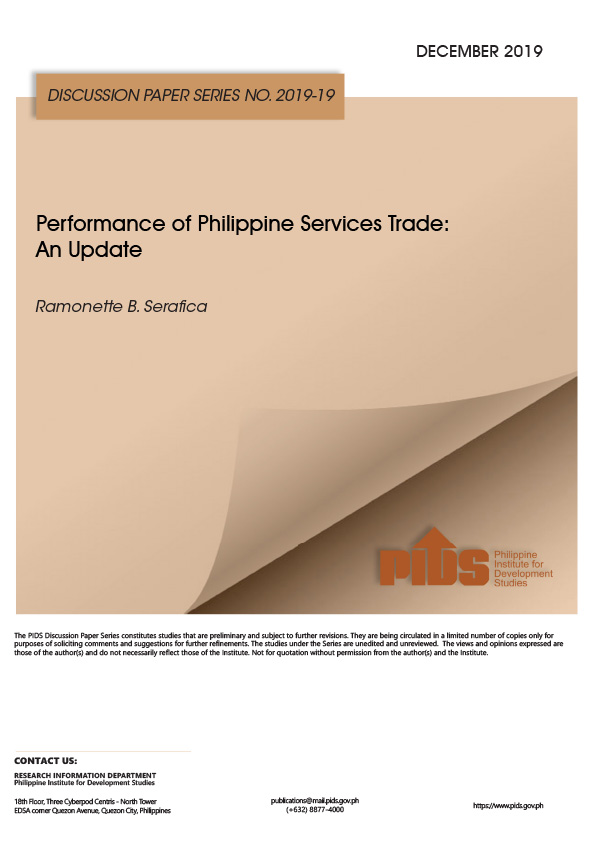
The government should focus on promoting the creative industries, an emerging sector that could potentially contribute to the country’s economic growth.
Philippine Institute for Development Studies (PIDS) Senior Research Fellow Ramonette Serafica said during the Institute’s recent Public Seminar on Digital Trade that the government should develop an export strategy to harness this sector. “This would be in line with the Philippine Development Plan 2017-2022 which seeks to promote creative industries that cover both tangible goods and intangible services,” she pointed out.
According to the United Nations Conference on Trade and Development, creative industries include advertising, architecture, arts and crafts, design, fashion, film, video, photography, music, performing arts, publishing, research and development, software, computer games, electronic publishing, and TV/radio.
Serafica said the government should promote copyright-based industries (CBIs), specifically the core CBIs whose outputs can be digitally delivered through the internet.
As defined by the World Intellectual Property Organization (WIPO), core copyright industries refer to those that are “wholly engaged in creation, production and manufacturing, performance, broadcast, communication and exhibition, or distribution and sales of works, and other protected subject matter”.
Core CBIs are divided into nine groups, namely, press and literature; music, theatrical productions, operas; motion picture and video; radio and television; photography; software and databases; visual and graphic art; advertising services; and copyright collective management societies.
Citing a 2014 study of Emma Francisco and coauthors, Serafica said the Philippines’ core CBIs contributed 5.11 percent of gross domestic product and 8.83 percent of total employment in 2010. In terms of trade, exports of core CBIs grew to USD 21 million in 2012, a 133-percent increase from 2010 when exports reached USD 9 million (or an annual growth rate of 53%).
As reported by WIPO in 2005, CBIs linked to the digital revolution have grown faster than the traditional sectors of the economy.
However, Serafica cautioned against cases of copyright infringements related to the activities and operations of core CBIs. Thus, she suggested the implementation of strict monitoring by authorities to avoid copyright breaches.
She also urged the Philippine Statistics Authority to regularly provide specific information and statistics to both public and private sectors about the creative economy, given its potential to enhance employment and economic outputs.
Moreover, Serafica called on the government to look more closely at the opportunities for supporting CBIs, considering the risks that the Fourth Industrial Revolution may have on employment.
The Public Seminar on Digital Trade is part of a series of seminars regularly conducted by PIDS to disseminate the results and policy recommendations of its completed research projects. ###
To read or download the PIDS research study related to this article, please visit this link: https://pidswebs.pids.gov.ph/CDN/PUBLICATIONS/pidsdps1830_rev.pdf
Philippine Institute for Development Studies (PIDS) Senior Research Fellow Ramonette Serafica said during the Institute’s recent Public Seminar on Digital Trade that the government should develop an export strategy to harness this sector. “This would be in line with the Philippine Development Plan 2017-2022 which seeks to promote creative industries that cover both tangible goods and intangible services,” she pointed out.
According to the United Nations Conference on Trade and Development, creative industries include advertising, architecture, arts and crafts, design, fashion, film, video, photography, music, performing arts, publishing, research and development, software, computer games, electronic publishing, and TV/radio.
Serafica said the government should promote copyright-based industries (CBIs), specifically the core CBIs whose outputs can be digitally delivered through the internet.
As defined by the World Intellectual Property Organization (WIPO), core copyright industries refer to those that are “wholly engaged in creation, production and manufacturing, performance, broadcast, communication and exhibition, or distribution and sales of works, and other protected subject matter”.
Core CBIs are divided into nine groups, namely, press and literature; music, theatrical productions, operas; motion picture and video; radio and television; photography; software and databases; visual and graphic art; advertising services; and copyright collective management societies.
Citing a 2014 study of Emma Francisco and coauthors, Serafica said the Philippines’ core CBIs contributed 5.11 percent of gross domestic product and 8.83 percent of total employment in 2010. In terms of trade, exports of core CBIs grew to USD 21 million in 2012, a 133-percent increase from 2010 when exports reached USD 9 million (or an annual growth rate of 53%).
As reported by WIPO in 2005, CBIs linked to the digital revolution have grown faster than the traditional sectors of the economy.
However, Serafica cautioned against cases of copyright infringements related to the activities and operations of core CBIs. Thus, she suggested the implementation of strict monitoring by authorities to avoid copyright breaches.
She also urged the Philippine Statistics Authority to regularly provide specific information and statistics to both public and private sectors about the creative economy, given its potential to enhance employment and economic outputs.
Moreover, Serafica called on the government to look more closely at the opportunities for supporting CBIs, considering the risks that the Fourth Industrial Revolution may have on employment.
The Public Seminar on Digital Trade is part of a series of seminars regularly conducted by PIDS to disseminate the results and policy recommendations of its completed research projects. ###
To read or download the PIDS research study related to this article, please visit this link: https://pidswebs.pids.gov.ph/CDN/PUBLICATIONS/pidsdps1830_rev.pdf












